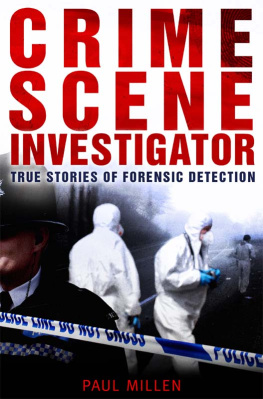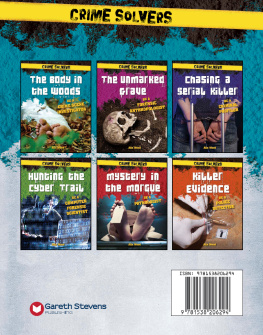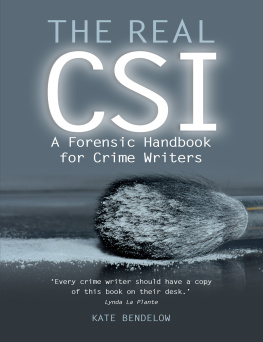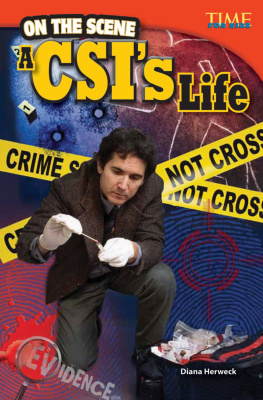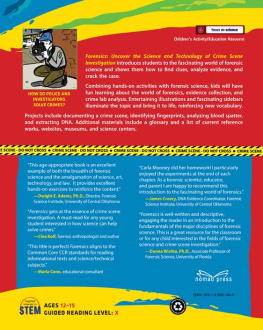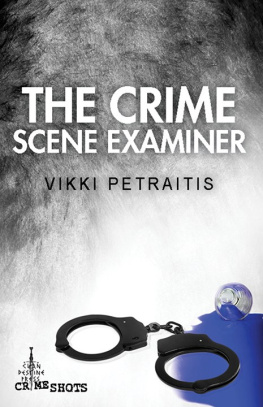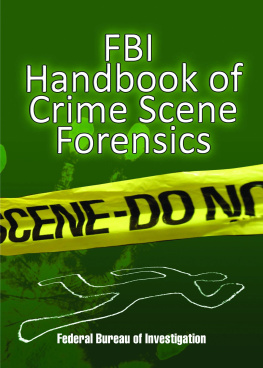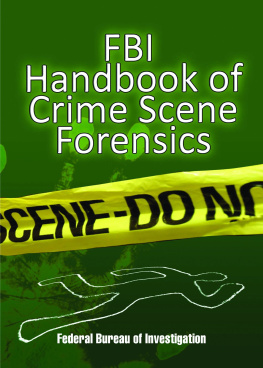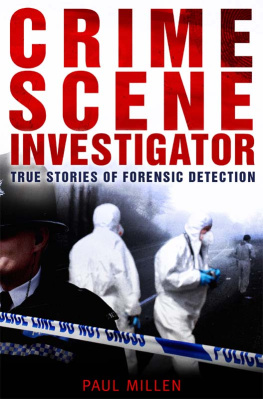
Crime Scene Investigator

Crime Scene Investigator
Paul Millen
ROBINSON
London
Constable & Robinson Ltd
5556 Russell Square
London WC1B 4HP
www.constablerobinson.com
Published by Robinson,
an imprint of Constable & Robinson, 2008
Copyright Paul Millen, 2008
The right of Paul Millen to be identified as the author of this work has been asserted by him in accordance with the Copyright, Designs & Patents Act 1988.
All rights reserved. This book is sold subject to the condition that it shall not, by way of trade or otherwise, be lent, re-sold, hired out or otherwise circulated in any form of binding or cover other than that in which it is published and without a similar condition including this condition being imposed on the subsequent purchaser.
A copy of the British Library Cataloguing in Publication
Data is available from the British Library
ISBN: 978-1-84529-663-6
eISBN: 978-1-47210-777-0
Printed and bound in the EU
1 3 5 7 9 10 8 6 4 2

Contents
To those who seek the truth and to those whose job it is to find it

Introduction
There is no such thing as a perfect crime. For every effect there is a cause, for every contact there is a trace. The detection of crime is dependent on both time and resource. A crime may seem perfect but there is always a victim, an offender and some gain, financial or emotional. There are always witnesses, some unwitting, to events which the offender would wish to conceal. Some crimes may be particularly well planned and elude detection for long periods of time, but detection is never impossible. Persistence and opportunity (some may call it luck) can unlock even the most difficult investigations. The resourcefulness, skill and tenacity of investigators are all that is needed to identify that a crime has taken place and bring the offender to justice.
This is not to say that all crimes are solved. But they can be. All you need to do is ask the right question of the right person and look in the right place.
Crime scene investigation is not what some popular TV programmes would have us believe. Some episodes cram in a lifetime of real endeavour. But in one area TV has it right. Crime scene investigation is more than just the examination of the crime scene and the recovery of forensic evidence. It is about reaching milestones which fix fact into an investigation. Fact from which there is no turning back. Quite often there are key or killer questions (no pun intended), the answers to which are profound. They can mean that certain statements from witnesses or the accused are proven absolutely true or false. They may not come along too often, but when they do they can turn the direction of an investigation. Often it is the little pieces of evidence which build up to give a full picture. It is always necessary to stand back and question the validity of each part and the overall view. Small milestones can often make a case.
Crime scene investigation doesnt usually extend to the interviewing of suspects unless you work in a small department and cover a large area. CSI is about the scientific investigation of crime. It is a contributor to the wider crime investigation and detection. Unlike on TV, it is not carried out by one individual or by a team, each member of which has the same and complete set of skills. The team is varied and diverse. Each member brings his or her skills, investigational, practical and knowledge-based, and through clear communication and good management focus on the common goal, the detection of the crime.
Forensic evidence is just like any other evidence produced in court. It can be accepted or rejected by the judge and jury. It may be strong or weak, it may support a theory or proposition or not. Strong evidence is that which has a high probability of supporting a view, a contact, a presence, an event. Even then it is strong or weak only based on the science as it is understood at that time and in the context of which it is being used. Forensic evidence is never good or bad. That is really dependent on whose side you are on and science doesnt take sides. It only seeks to support the truth so it should only be described as strong or weak. Likewise, whenever I hear that some evidence is consistent with I shudder. It is a question which experts will be asked by ill-informed lawyers. To me it is a trap; it may be unintentional but it is a trap none the less. The evidence may be consistent with some other event or proposition. The expert must also consider these other circumstances and communicate them too. DNA is generally considered strong evidence, foolproof. However, it must be questioned and tested in the judicial process to ensure that it is used in the correct context. DNA evidence, strong though it may appear, does not prove guilt on its own.
Some people are born investigators, others are taught. Both types improve with development, practice, experience and exposure. The last, exposure to a large range of criminal investigations rather than just one type, is very important as it confronts the investigator with a range of experiences on which to do well and also to make mistakes. There is nothing wrong with making mistakes, provided they dont result in miscarriages of justice. The mistakes which I am referring to are ones of approach, technique and recovery. These can be corrected and honed to improve and investigate further crime, particularly more complicated or serious crime. Everything found or recovered should be kept even if its condition could be better. Like any apprentice, I cut my teeth on the basics, improving and developing, learning how to do things better. I embraced the opportunities which technology and changes in legislation gave me.
The ability to think objectively and laterally, to look at objects or scenes in a different way, to look up as well as ahead are all important. I am still horrified by the care which I took to copy and describe some strange writing on an object which had been submitted to the forensic science laboratory early in my career. The font was strange and appeared like hieroglyphics, until I turned it around. To my shock and embarrassment it read simply 1. It was a lesson so well learnt that I still remember it thirty years later. And the important thing is to learn and to keep on learning.
There is a tendency to see things not as they are, but as we are. So we make assumptions based on our experience and expectations. There is a constant challenge for the investigator to test those assumptions. Only then can we be sure that the assumption is correct and the answer measured against our understanding and wider accepted knowledge.
Science is the perfect companion and contributor to the detection of crime. By its own nature, seeking information, observing, questioning, analysing and testing against published criteria and even questioning those criteria, are the meat and drink of science. The discipline is in carefully recording observations, material and tests so that others might see and question. It is the basis of sound scientific endeavour. Important enough in the laboratory or places of learning, it is critical in a court of law where the liberty, reputation and perhaps the very life of the accused may be at stake. It is a sobering responsibility.
Next page
